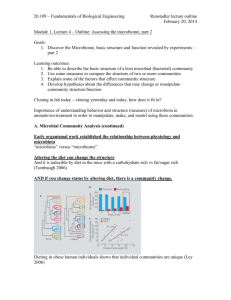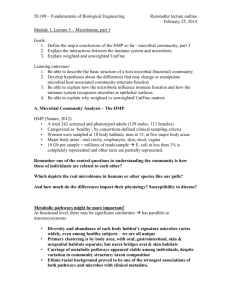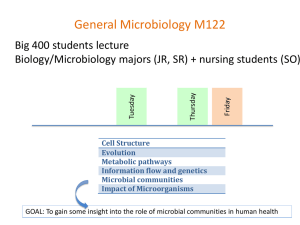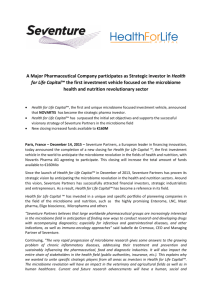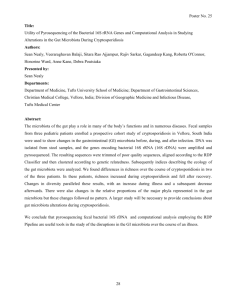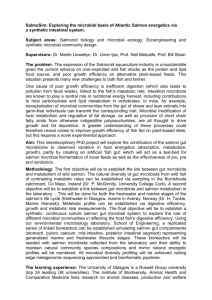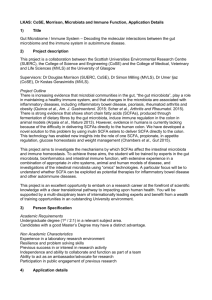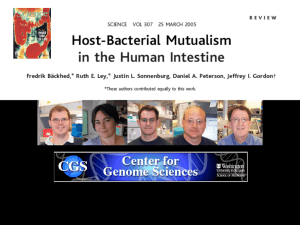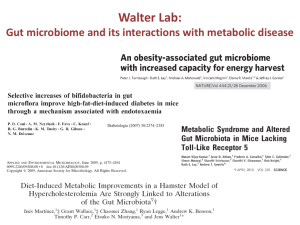Comparison Of The Gut Microbiomes Of Pigs, Mice, And Humans
advertisement
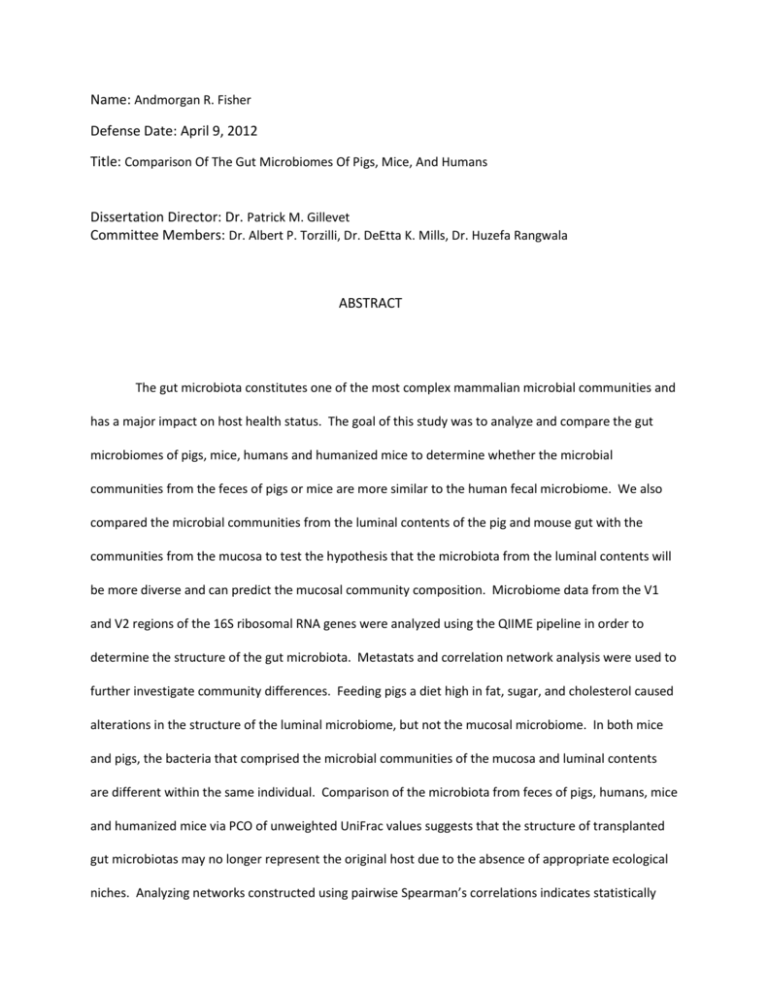
Name: Andmorgan R. Fisher Defense Date: April 9, 2012 Title: Comparison Of The Gut Microbiomes Of Pigs, Mice, And Humans Dissertation Director: Dr. Patrick M. Gillevet Committee Members: Dr. Albert P. Torzilli, Dr. DeEtta K. Mills, Dr. Huzefa Rangwala ABSTRACT The gut microbiota constitutes one of the most complex mammalian microbial communities and has a major impact on host health status. The goal of this study was to analyze and compare the gut microbiomes of pigs, mice, humans and humanized mice to determine whether the microbial communities from the feces of pigs or mice are more similar to the human fecal microbiome. We also compared the microbial communities from the luminal contents of the pig and mouse gut with the communities from the mucosa to test the hypothesis that the microbiota from the luminal contents will be more diverse and can predict the mucosal community composition. Microbiome data from the V1 and V2 regions of the 16S ribosomal RNA genes were analyzed using the QIIME pipeline in order to determine the structure of the gut microbiota. Metastats and correlation network analysis were used to further investigate community differences. Feeding pigs a diet high in fat, sugar, and cholesterol caused alterations in the structure of the luminal microbiome, but not the mucosal microbiome. In both mice and pigs, the bacteria that comprised the microbial communities of the mucosa and luminal contents are different within the same individual. Comparison of the microbiota from feces of pigs, humans, mice and humanized mice via PCO of unweighted UniFrac values suggests that the structure of transplanted gut microbiotas may no longer represent the original host due to the absence of appropriate ecological niches. Analyzing networks constructed using pairwise Spearman’s correlations indicates statistically significant feature pair differences for the microbial communities from lean and obese pigs and humans. These results highlight the impact of diet on the genetic diversity of the microbiota in the mammalian gut and indicate that network analysis is a novel and exciting methodology that can elucidate patterns in complex biological data.
